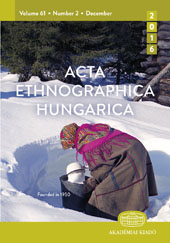Narrative droodles as humorous miniature fairy tales?
Narrative droodles as humorous miniature fairy tales?
Author(s): Piret Voolaid Subject(s): Visual Arts, Pragmatics, Sociolinguistics, Theory of Communication
Published by: Akadémiai Kiadó
Keywords: riddles; droodles; narrative droodles; visual riddles; typology of riddles; fairy tales; humour;
Summary/Abstract: The article is based on the online database “Estonian Droodles” (available at http://www. folklore.ee/Droodles, containing 7,200 droodles collected from 1963 up to the present), which includes a number of longer visual narrative riddles (about 430 text variants, 79 types, i.e. different droodles). The question component of the so-called ‘narrative droodles’, or ‘droodle tales’, is a verbally transmitted tale visualised by means of a pictorial image. The performer of a droodle sketches the image during narration and the story ends with a punch line question. Among narrative droodles there are variants built on a specific scene and plot, which may even resemble a miniature fairy tale. The extremely condensed plot centres on only one or two characters. For the purpose of distancing from reality, a princess, king, prince, witch, Little Red Riding Hood, etc. may be chosen as protagonists; the more popular characters are represented as the following character pairs – girl/boy, brother/sister, woman/man, grandmother/grandfather. The narrative droodles are not comparable to the majority of fairy tales in length, but the fast pace of modern life seems to favour the use of such illustrated narrative riddles. An analysis of the structural composition and function of narrative droodles of this type reveals the shared common features with the structure and function of fairy tales.
Journal: Acta Ethnographica Hungarica
- Issue Year: 54/2009
- Issue No: 1
- Page Range: 143-154
- Page Count: 12
- Language: English
- Content File-PDF

